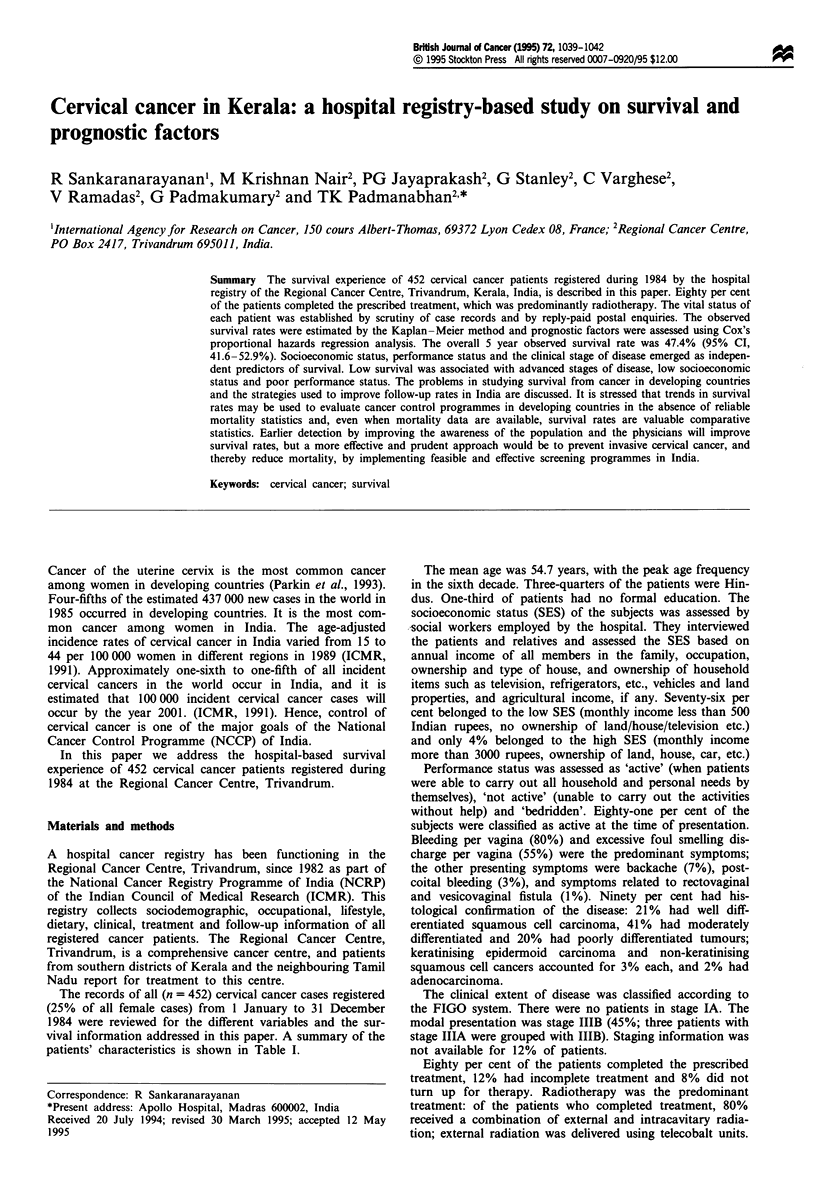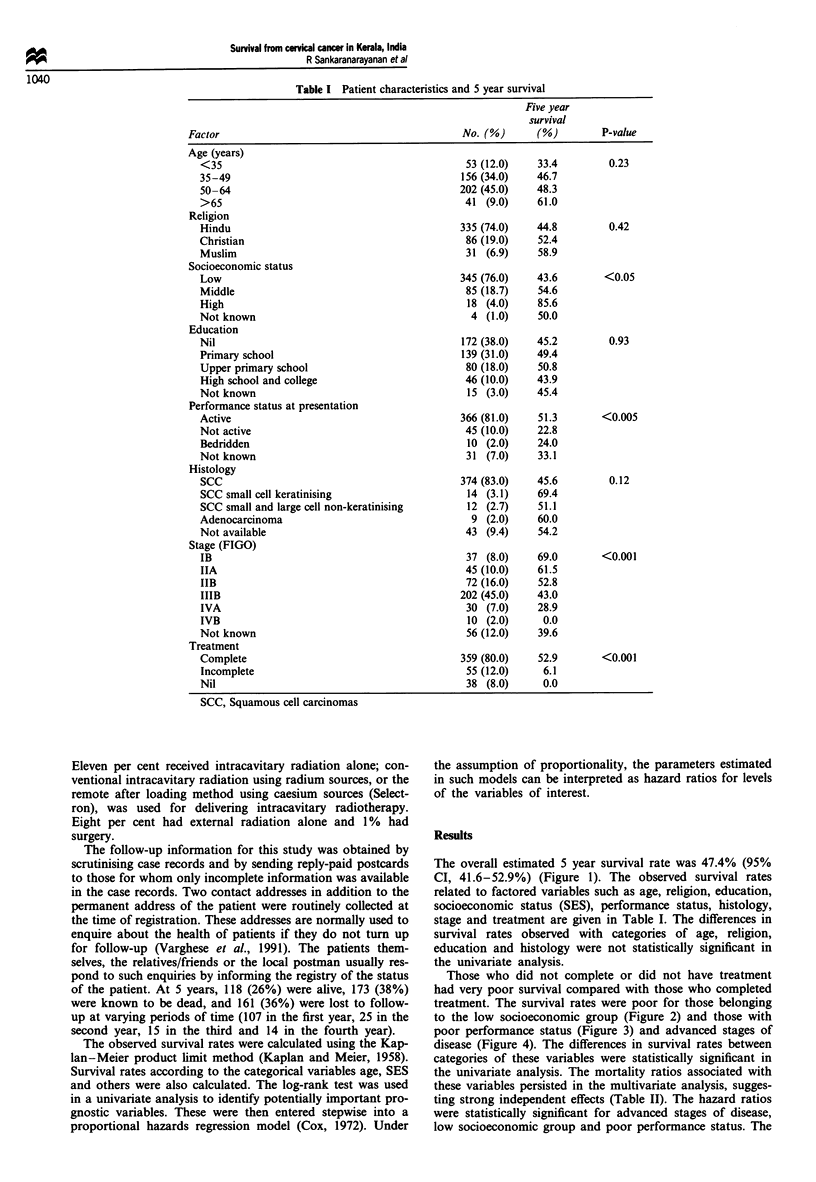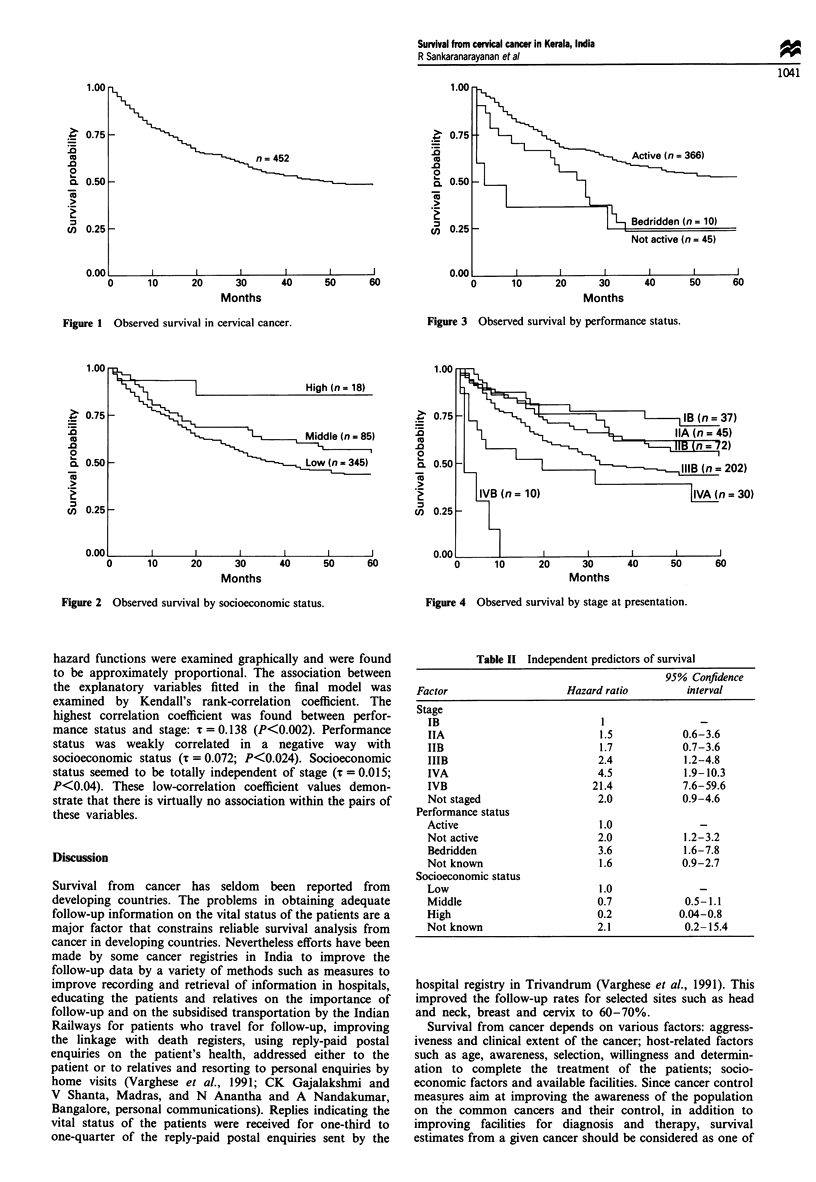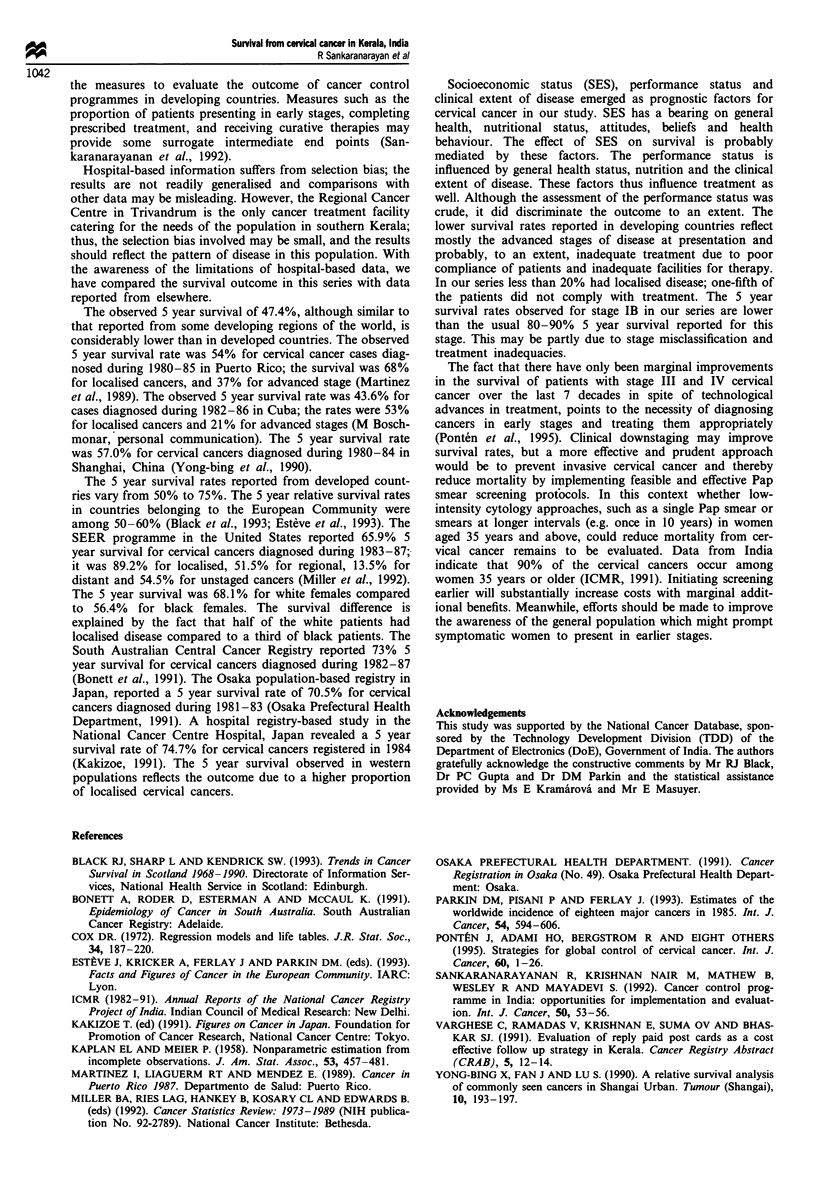Abstract
The survival experience of 452 cervical cancer patients registered during 1984 by the hospital registry of the Regional Cancer Centre, Trivandrum, Kerala, India, is described in this paper. Eighty per cent of the patients completed the prescribed treatment, which was predominantly radiotherapy. The vital status of each patient was established by scrutiny of case records and by reply-paid postal enquiries. The observed survival rates were estimated by the Kaplan-Meier method and prognostic factors were assessed using Cox's proportional hazards regression analysis. The overall 5 year observed survival rate was 47.4% (95% CI, 41.6-52.9%). Socioeconomic status, performance status and the clinical stage of disease emerged as independent predictors of survival. Low survival was associated with advanced stages of disease, low socioeconomic status and poor performance status. The problems in studying survival from cancer in developing countries and the strategies used to improve follow-up rates in India are discussed. It is stressed that trends in survival rates may be used to evaluate cancer control programmes in developing countries in the absence of reliable mortality statistics and, even when mortality data are available, survival rates are valuable comparative statistics. Earlier detection by improving the awareness of the population and the physicians will improve survival rates, but a more effective and prudent approach would be to prevent invasive cervical cancer, and thereby reduce mortality, by implementing feasible and effective screening programmes in India.
Full text
PDF



Selected References
These references are in PubMed. This may not be the complete list of references from this article.
- Parkin D. M., Pisani P., Ferlay J. Estimates of the worldwide incidence of eighteen major cancers in 1985. Int J Cancer. 1993 Jun 19;54(4):594–606. doi: 10.1002/ijc.2910540413. [DOI] [PubMed] [Google Scholar]
- Pontén J., Adami H. O., Bergström R., Dillner J., Friberg L. G., Gustafsson L., Miller A. B., Parkin D. M., Sparén P., Trichopoulos D. Strategies for global control of cervical cancer. Int J Cancer. 1995 Jan 3;60(1):1–26. doi: 10.1002/ijc.2910600102. [DOI] [PubMed] [Google Scholar]
- Sankaranarayanan R., Nair M. K., Mathew B., Wesley R., Mayadevi S. Cancer control programme in India: opportunities for implementation and evaluation. Int J Cancer. 1992 Jan 2;50(1):53–56. doi: 10.1002/ijc.2910500112. [DOI] [PubMed] [Google Scholar]


